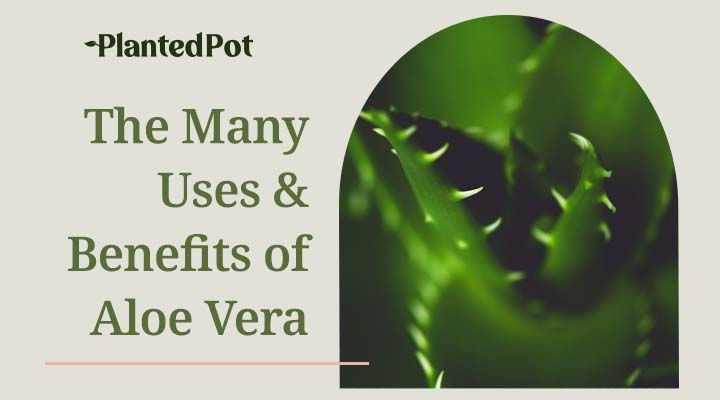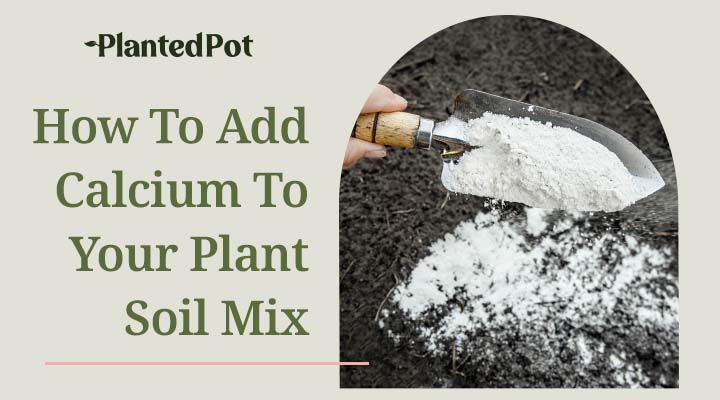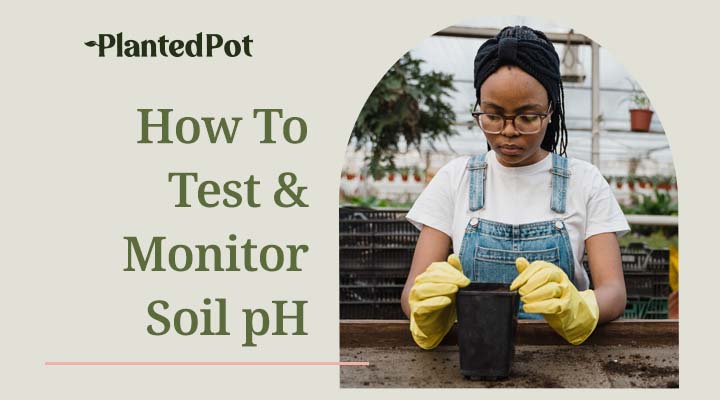
Why Do Plant Leaves Turn Yellow? Hints To Turn Leaf Tips Green Again
Home / Why Do Plant Leaves Turn Yellow? Hints To Turn Leaf Tips Green Again
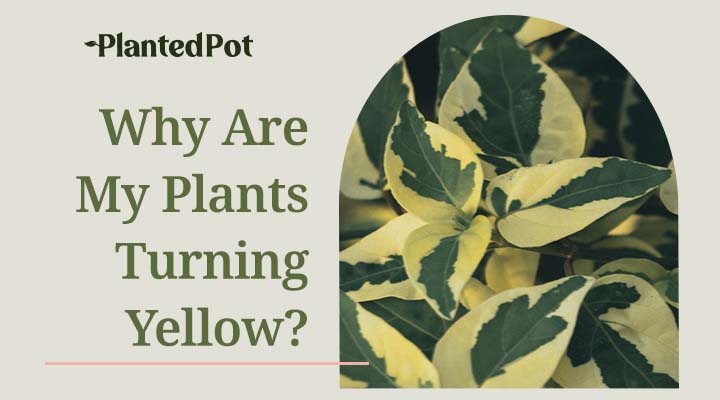
Why Do Plant Leaves Turn Yellow? Hints To Turn Leaf Tips Green Again
- Olivia Richman
- May 31, 2021
- 3:30 pm
- No Comments
We love plants because they’re beautiful, vibrant, and bring a touch of green to your decor. But wait, your plant’s leaves are turning yellow. Why do plant leaves turn yellow? What’s going on with your plant? Unfortunately, yellow leaves are usually a warning that your plant is unhealthy.
If you’re not caring for your plant correctly, the leaves could turn yellow, brown, and eventually fall off! The most important thing to do is pinpoint exactly why your plant is calling out for help. From there, you can ensure that your plant is green and thriving with some easy-care fixes.
Why Do Plant Leaves Turn Yellow?
You know how a street light has that yellow light in between that means “yield?” That’s basically what yellow means in plants too. Something you’re doing is not exactly right, and your plant is warning you to stop before the light turns red, i.e., your plant leaves turn brown or break off.
The official term for plant leaves turning brown is “chlorosis.” The yellowing occurs when something interferes with your plant’s chlorophyll, which is another word for their pigment.
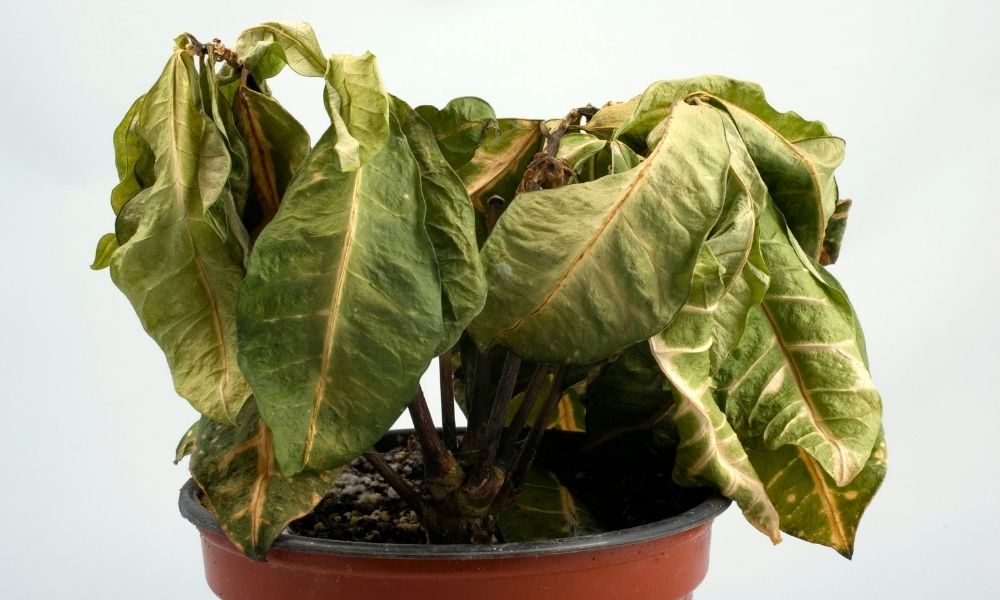
The most common reasons a plant’s leaves turn yellow are:
- Overwatering
- Poor drainage
- Lack of light
- Too much light
- Wrong temperature
- Lack of proper nutrients
- Improper soil pH
- Root damage
Let’s take a closer look at these common reasons your plant might be turning yellow. And come up with a good solution to help your plant recover and thrive.
Overwatering or Poor Drainage
This is THE most common reason a plant turns yellow. Overwatering can lead to moisture stress, meaning your plant’s soil is too wet, and your plant is becoming soggy. A pot with poor drainage will also trap water in the soil, which drowns your plant.
Make sure you are not watering your plant too often by checking the soil in between waterings. Put your finger a few inches into the soil to see if it’s too wet or too dry. If it’s just slightly moist, it’s usually time to water your plant again.
Each plant has its own unique watering needs. There are some types of plants that enjoy moist soil. There are also some plants that need their soil to completely dry before you water again. The amount you water and the frequency in which you water depends on the plant’s specific requirements.
If your soil is very wet, you might even want to remove your plant from the pot and let it dry on some paper towels. Put it in a better draining pot with new soil.
A quick note: Under-watering your plant can also lead to yellow leaves. Check to see if your soil is too dry. If your plant seems in dire need of more water, let the pot sit on a dish of water so the roots can absorb the extra water. Start watering your plant more often from here.
Not Enough Light
There are a lot of plants that prefer indirect, bright light but are said to be versatile enough to survive low light. But that doesn’t always mean this is the best option for your plant if you want it to thrive and stay vibrant and healthy.
Without enough light, leaves will turn yellow due to a lower rate of photosynthesis. When light increases, so does the rate of photosynthesis. If your plant is in a very dark area and you’re noticing yellow leaves, try moving it to a spot with bright, indirect light to see if your plant benefits.
Related: Low Light Indoor Plants: Easy On the Eyes and Even Easier to Maintain
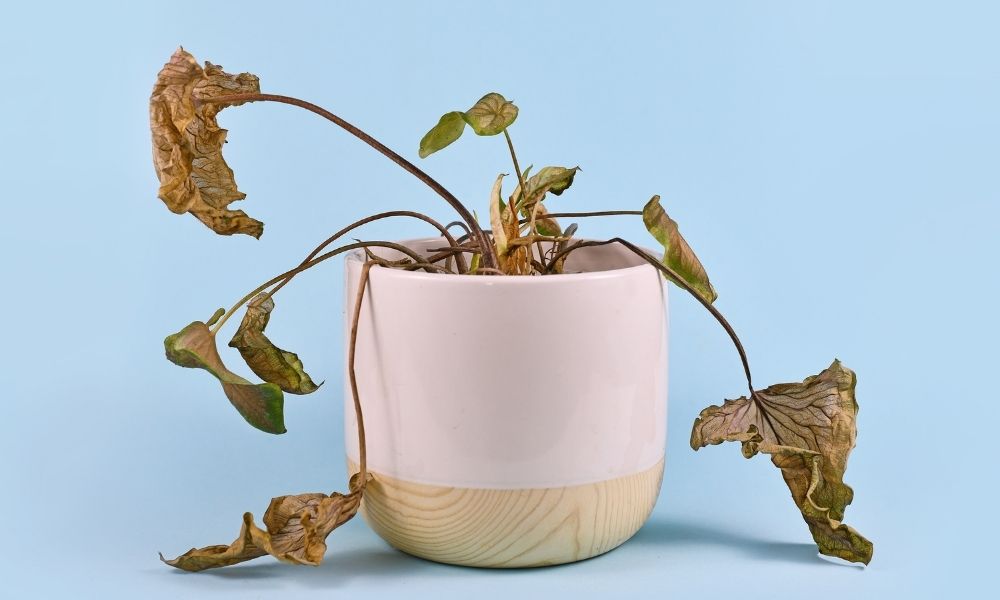
Temperature
Each plant has a specific range of temperatures meant to mimic the plant’s natural environment and keep them healthy in your home. Plants that prefer heat and humidity, like tropical plants, can easily become cold.
Cool drafts or being near an air conditioner can turn a tropical plant’s leaves yellow. If the plant is exposed to cold temperatures for longer periods of time, the leaves will eventually turn brown. If you have a tropical plant with yellow leaves, try putting the plant in a warmer area. Keep them away from doors and windows. Even consider placing them in a bathroom where it’s a bit more humid. Raise the temperature in your home as well, if possible.
Lacking Proper Nutrients
Most plant species don’t require fertilization. And if they do, it’s usually very little. But even if it doesn’t seem like a big deal, skipping on this small step of plant ownership may have a negative impact on your plant. Not getting proper nutrients can lead to yellowing leaves.
A plant that’s not getting the nutrients they need will often have yellow veins atop a green leaf. The tissue might also turn yellow.
- Nitrogen deficiency: Older, inner leaves turn yellow first. Young leaves will eventually turn yellow as well.
- Potassium deficiency: Edges of the leaf turn bright yellow. Older leaves will show symptoms first. The edges will soon turn brown.
- Magnesium deficiency: Leaves will get yellow patches between the veins. This starts on older leaves, slowly spreading to their edges. They will eventually turn brown.
- Iron deficiency: The leaf’s veins will turn yellow. Young leaves will appear yellow first, usually on the top of the plant or the branch’s tips.
- Sulfur deficiency: The newest leaves will turn yellow first. Eventually, all the leaves will turn yellow.
On the other end of the spectrum, over-fertilizing can also lead to yellowing leaves. Sometimes plant owners will use too much fertilizer in hopes that their plant will grow faster. But too much fertilizer can “burn” your plant, leaving its leaves yellow.
Improper Soil pH
Most premium, quality plant fertilizers will ensure that your plant’s soil has the right pH balance. But sometimes outdoor plants might have the wrong soil PH, meaning your plant isn’t getting the proper nutrients.
Most plants prefer neutral to slightly acidic pH levels (6.0-7.0). But there are some plants that prefer more acid in the soil. If your soil pH level if off, plants won’t get the nutrients they need (even when you add fertilizer). The leaves will turn yellow until the pH issues are fixed.
Root Damage or Compacted Roots
Root damage can happen for a variety of reasons, including root rot, disease, or getting compacted. When roots are damaged, they can’t deliver water, oxygen, and nutrients to the plant as easily. Without these valuable resources, your plant’s leaves will start turning yellow.
If you notice yellow leaves, check your plant’s container for damaged or compacted roots. Slide your plant out of the pot and check out the roots’ appearance. They should be white or yellow.
- If they are dark and have a strong smell, they are rotten and diseased.
- If they are simply compacted, prune the unhealthy roots and loosen the rest. Then repot the plant in a larger container.
Pests and Disease
There are certain pests and diseases that cause your plant’s leaves to turn yellow. Here are the most common:
- Mites
- Aphids
- Mealybugs
- Thrips
- Scale
- Whiteflies
- Fungus Gnats
A lot of these insects are too small to see. Plant owners will instead study their plant’s behavior and appearance. Usually, leaves will turn yellow. They will also crinkle at the edges. Eventually, they’ll fall off. To rid your plant of pests, you’ll have to repeatedly wash your plant. Use a horticulture soap or neem oil.
Root disease is another problem for plants. This happens when your plant is root-bound or in soil that isn’t draining properly. Damaged and dying roots can’t provide nutrients to the rest of your plant, affecting their overall health.
Sometimes pieces of the root can be removed, and the rest of the plant can be repotted with new soil. Just make sure the pot is large enough to fit its roots comfortably and has drainage holes.
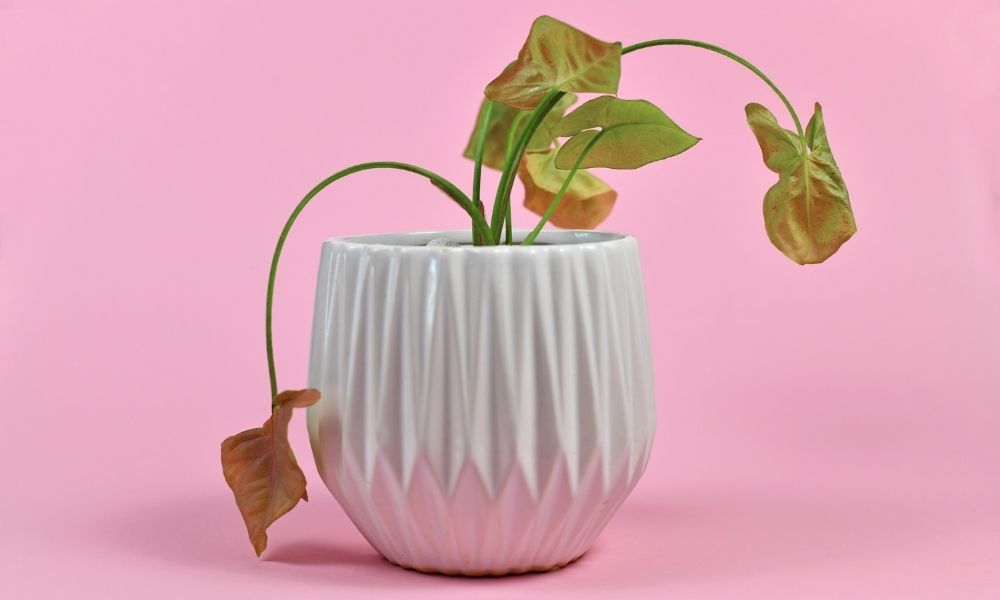
Why Plant Leaves Turn Yellow in Containers
Container plants have limited space and a closed environment. That means that the environment needs to be monitored closely and properly controlled to ensure the plant is getting the right moisture, nutrients, medium, lighting, and temperature.
The most common solution to yellowing leaves is to change the soil. Changing the soil runs the risk of shocking your plant, which can also cause yellow leaves. Make sure they’re in the right light and temperature. And check the soil’s pH levels.
Container plants might also get yellow leaves from overhead watering. Certain plants will develop yellow “water spots” due to their type of foliage. Make sure to water plants with slightly furred foliage from the soil instead of watering from above.
Can Yellow Leaves Turn Green Again?
Once you’ve addressed the reason for your plant’s yellowing leaves, can the leaves turn green again? Possibly! A yellow leaf can turn green again if it’s caused by a nutritional deficiency. If that’s the issue, providing your plant with the right nutrients will allow your plant’s leaves to turn green again. But usually, yellow leaves are permanent. That doesn’t mean the plant itself is dead. But those leaves might have to be removed.
Should I Cut Yellow Plant Leaves Off?
Yes! Trimming or plucking away yellowing or dead leaves will keep your plant healthy. It will also prevent unwanted pests from settling on your plant. A lot of pests are attracted to decaying leaves and will be drawn to a plant with yellow leaves.
Once your plant only has healthy, green leaves, make sure to keep on top of your plant’s watering, temperature, and nutrient requirements to ensure they don’t turn yellow as well. Over pruning a plant can cause further issues.
Final Thoughts – Why Do Plant Leaves Turn Yellow?
Yellow leaves are usually a bad sign. It could mean that your plant suffers from neglect, disease, pests, or even near death. Luckily it’s very easy to address this issue and help improve your plant’s health.
Yellow leaves are usually signsMany that your plant is overwatered, underwatered, not getting the right nutrients, or isn’t in the proper temperature or environment. Once you figure out what’s causing your plant’s leaves to turn yellow, you can make necessary changes to turn your plant around and watch them thrive.


